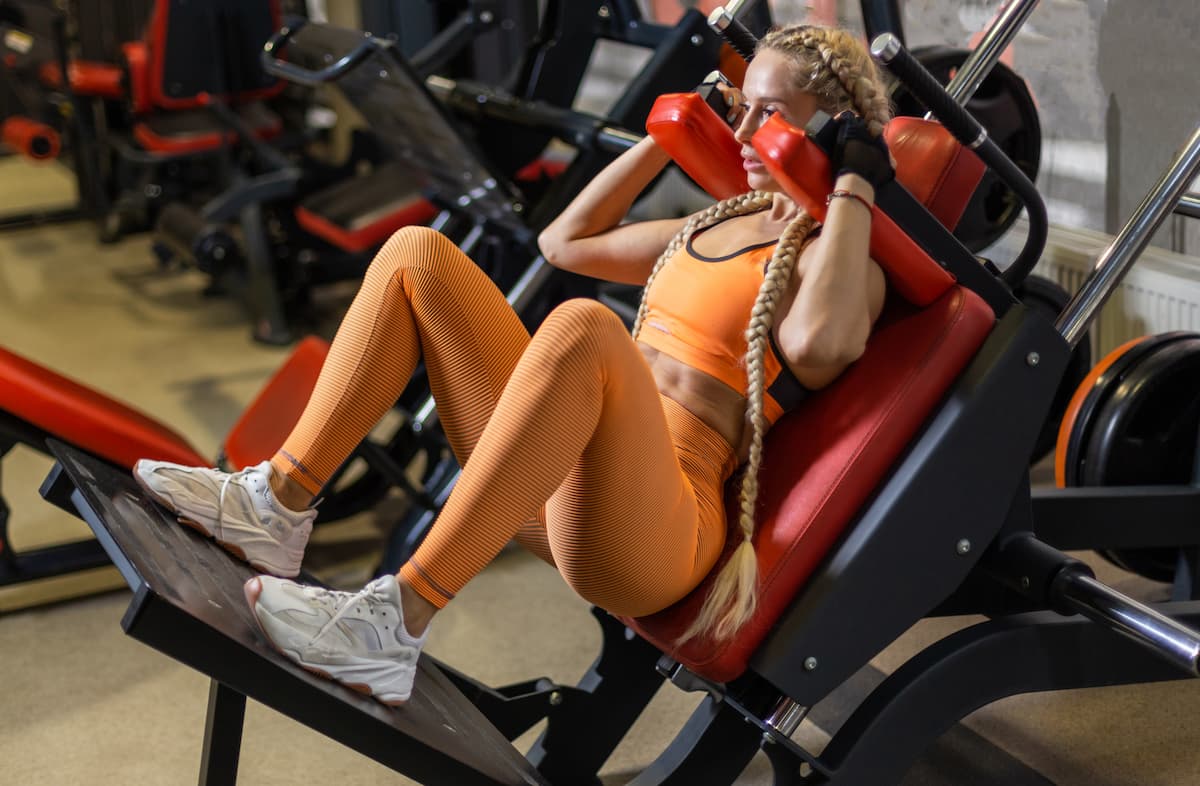The squat machine has become an indispensable piece of equipment in modern gyms and fitness centers. This incredibly versatile machine works wonders for those looking to strengthen their lower body, targeting key muscle groups such as the quads, adductors, glutes, spinal erectors, and hamstrings.
In this comprehensive guide, you will learn how to use the squat machine effectively and safely, as well as discovering variations and tips to make your workouts more efficient.
Getting Started with the Squat Machine
Before diving headfirst into your squat machine workout, it’s essential to understand the various elements of the machine itself, which may include:
- Padded shoulder rests
- A platform to stand on
- An adjustable safety stopper
- Weight plates or selectorized weight stacks
Once you have familiarized yourself with these components, follow these basic steps to start using the squat machine:
- Adjust the machine to your preferred settings: Begin by adjusting the height of the padded shoulder rests according to your body proportions. Make sure you are comfortable standing on the platform, and adjust the safety stoppers so that they catch if you lose balance during your squats.
- Select the appropriate weight: Based on your current fitness level, choose a weight that will challenge you but is also manageable. Remember that it’s always best to start light and gradually increase the resistance as you build strength.
- Perform a warm-up set: Before starting your actual working sets, it’s a good idea to perform one or two warm-up sets of around 8-10 reps. This should be done with lighter weights to prepare your body for the exercise and prevent injuries.
Tips for Mastering Your Squat Machine Form
Now that you’ve prepped the squat machine and warmed up, it’s time to focus on perfecting your form. Proper technique is crucial when using any exercise equipment, but especially so for an intensive workout like squats. Here are some key tips for achieving the correct squat machine posture:
Foot Placement
The position of your feet plays a significant role in determining which muscles are targeted during the exercise. To find the best foot placement for your body type, follow these simple steps:
- Stand on the platform with your feet shoulder-width apart.
- Point your toes slightly outward and ensure that they remain aligned with your knees as you squat down.
Note: There is no one-size-fits-all approach for optimal foot placement, so experimentation is key. By making slight adjustments to the width, angle, or positioning of your feet, you can determine what feels most comfortable and effective for you individually.
Body Alignment
Maintaining proper body alignment is critical when using the squat machine to avoid strain or injury. It will also help you get the best results from your workouts. Ensure that you:
- Keep your chest lifted and shoulders pulled back throughout the exercise.
- Maintain a neutral spine by engaging your core and looking straight ahead.
- Carefully control your movement when descending into the squat without rounding your back or allowing your knees to cave inward or extend past your toes.
Squats Variations Using the Squat Machine
Once you have mastered proper form on the squat machine, you can start exploring different squat variations to challenge your body and keep your workouts engaging. A few popular options include:
Narrow-stance Squats
This variation targets your quads more intensely than traditional squats. To perform narrow-stance squats, simply reduce the distance between your feet so that they are closer than shoulder-width apart. Keep your toes pointing forward and ensure that your knees remain aligned with them while performing the exercise.
Wide-stance Squats
In contrast to narrow-stance squats, going wider targets your adductors and glutes more effectively. Place your feet at a width greater than shoulder-distance apart – just ensure that your knees remain in line with your feet and never collapse inward.
Pulses
To increase intensity and activate your muscles even further, try adding pulses to your regular squat routine. When you reach the lowest point of your squat, instead of immediately pushing back up, hold the position and bounce lightly for 1-2 seconds before returning to the starting position. These micro-movements work wonders for activating your lower body muscles.
Progressing Your Squat Machine Workouts
Like any other exercise, it’s essential to stay consistent with your squat machine training to continue seeing progress. As you grow stronger and more confident using the machine, consider incorporating these strategies:
- Increase the weights: The most obvious way to elevate your workout is by progressively adding weight. This will ensure that your muscles continue to be challenged and adapt, leading to strength gains and muscle growth.
- Experiment with tempo: Switching up the speed of your repetitions can have a surprising impact on the intensity of your workout. Try performing slower reps for a more controlled burn or incorporate explosive, fast-paced squats for added power training.
- Vary your rep ranges: Another way to keep your muscle fibers guessing is by mixing up your rep scheme. Instead of always sticking to the typical 8-12 rep range, occasionally perform higher-rep sets (15-20+) to push your endurance or opt for lower-rep sets (3-6) to focus on pure strength gains.
With this comprehensive guide, you are well-equipped to get started with the squat machine and maximize its potential in honing your lower body. Remember to prioritize proper form, stay consistent, and be disciplined in challenging yourself – soon enough, you’ll see strong results from your focused efforts at the gym.

